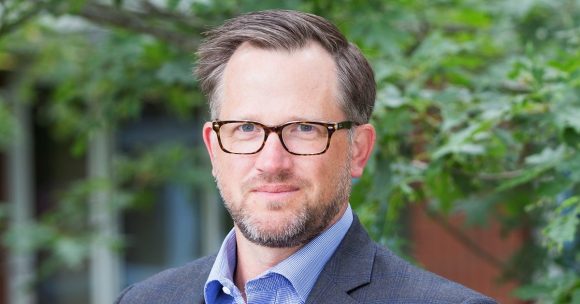By Sasha Milam. Originally published in the winter 2020 issue of Business Class magazine. Photo: Adobe Stock.
Stakeholder management is an issue that academics have historically considered from the perspective of firms: how can firms better categorize and maneuver the groups that have an interest in their business?
Associate Professor Matt Murphy and his co-authors aimed to flip this perspective in the recent paper “Community Influence Capacity on Firms: Lessons from the Peruvian Highlands.” In it, they ask: how do stakeholders fulfill their own objectives when working with firms?
The study takes readers to the highlands of Peru, where a mining company and two adjacent communities navigate questions of land use and development. Prevailing logic would suggest the two communities should have had similar relationships with the mining firm, because the control over resources, land ownership, governance and interests were very similar. The mining project, called Toromocho, was generally viewed by both communities as an opportunity to generate jobs and improve economic wellbeing.
However, one of the communities, Pucará, was very successful in achieving the outcomes it wanted with the firm. The other, Yauli, had much more difficulty influencing the mining company to get what it wanted out of the relationship.
The difference, Murphy says, comes down to two key factors: community vigour and the community’s pool of knowledge.
“For anyone interested in learning how they as a stakeholder can influence a firm, these are the two concepts to focus on,” he says. “All things being equal, these are the things that are going to make the difference between a stakeholder or community getting what it wants from its relationship with a firm—or not.”
Pool of knowledge describes the actions researchers observed as stakeholders actively sought to learn from other groups who had navigated similar relationships.
“Pucará was very intentional and proactive about learning,” says Murphy. “One of its members had been part of some NGOs in the past, one of which had sponsored him to come to Canada and learn how First Nations had dealt with these situations. Pucará had extensive relationships with other communities and NGOs. You could see ways members had explicitly taken what they learned from those situations and applied it to their benefit.
“To me that was the biggest failing of the Yauli community—its members didn’t seek out other communities, they were distrustful of NGOs and said they would manage the relationships with mining firms themselves, and so they learned by trial and error and that was very painful for them.”
Similarly, Yauli did not demonstrate a strong sense of community vigour.
A term the researchers chose for its suggestion of vitality and well-being, community vigour captures a sense of unique community identity and worth. Yauli community members did not express a sense of their distinct identity and desire to preserve it, and there was not a strong awareness of long-term impacts of the mining negotiations on the overall community’s future wellbeing. On the other hand, members of Pucará showed a cohesive vision of who they were as a group, and interest in preserving this identity was evident throughout their dealings with the mining firm. They identified as herders and agriculturalists first and foremost, so they prioritized trading for better agricultural land, rather than selling land for cash.
The specifics of these two traits will look subtly different depending on the stakeholders in question; not every stakeholder belongs to a geographically contained group, or deals with an extractive industry. However, Murphy acknowledges that these concepts likely have application in just about any industry.
“The more cohesive stakeholders are as a group, the better decision-making processes they have, the more knowledge-sharing they have and the more they go and intentionally learn from the external environment, the more it’s going to help them design their approach in a way that’s well-informed and keeps everyone on board as much as possible. I think that would apply to almost any stakeholder situation.”
Arenas, D., Murphy, M., & Jáuregui, K. (2020). Community Influence Capacity on Firms: Lessons from the Peruvian Highlands. Organization Studies, 41(6), 737–765. https://doi.org/10.1177/0170840618814567



